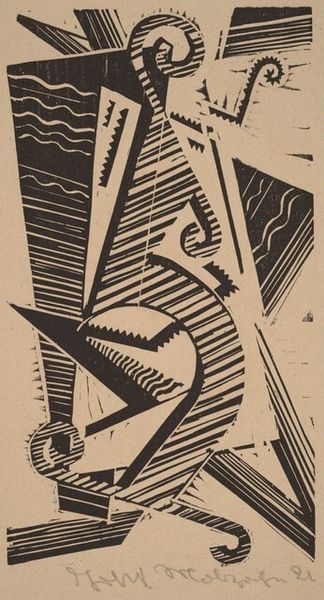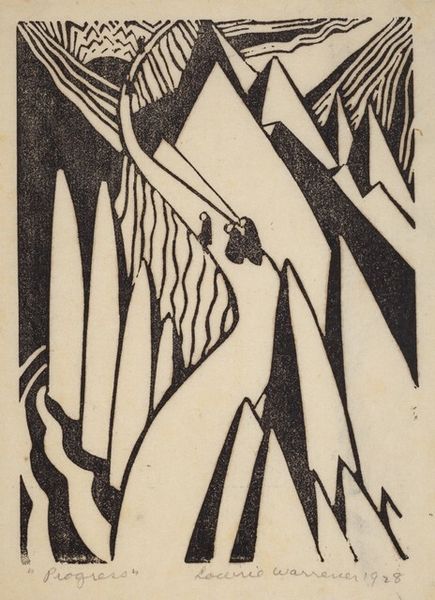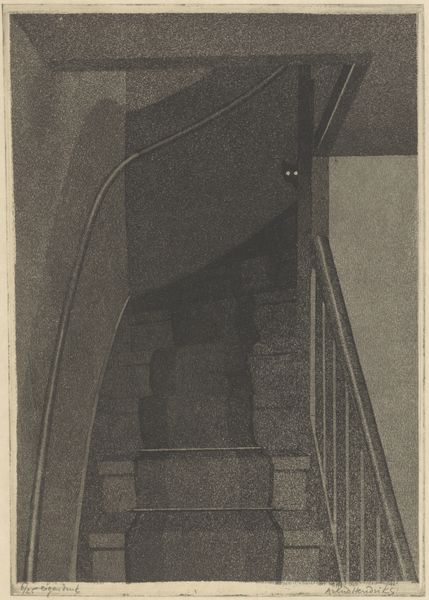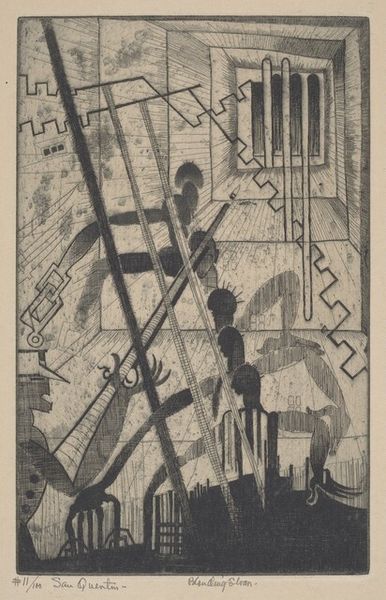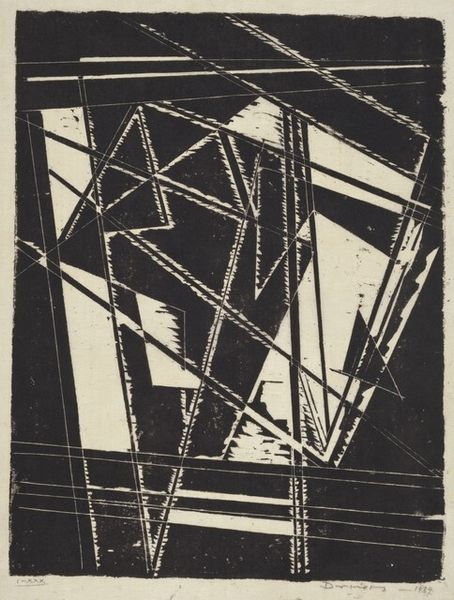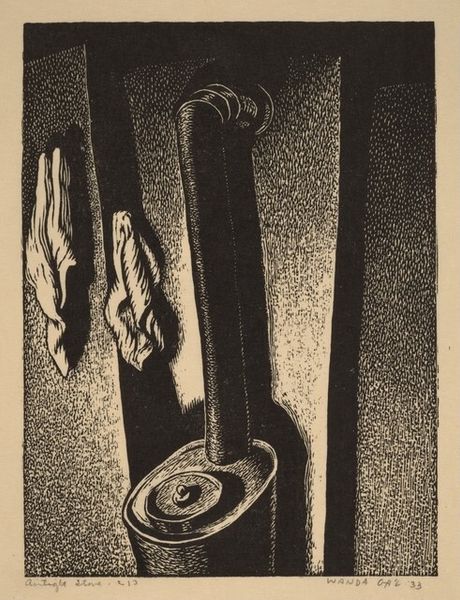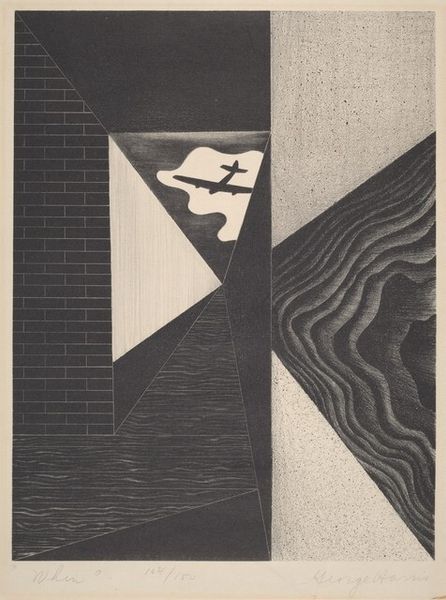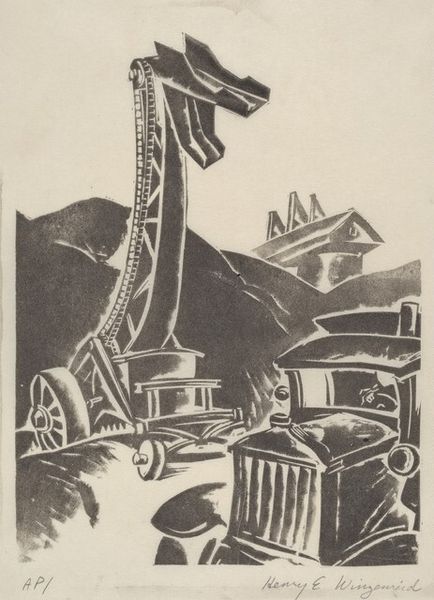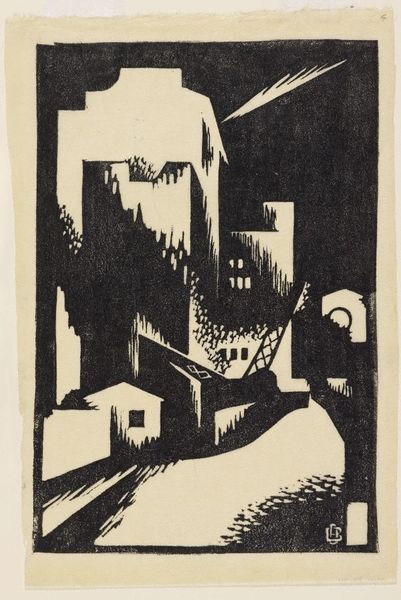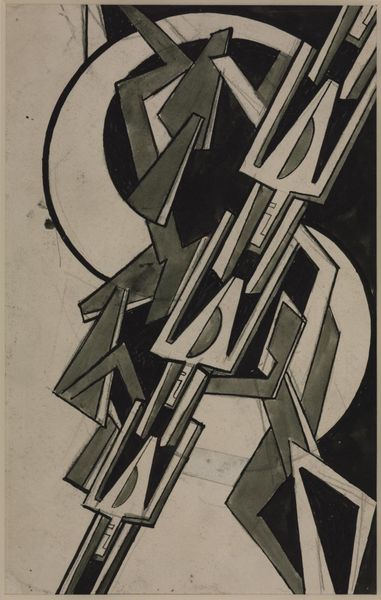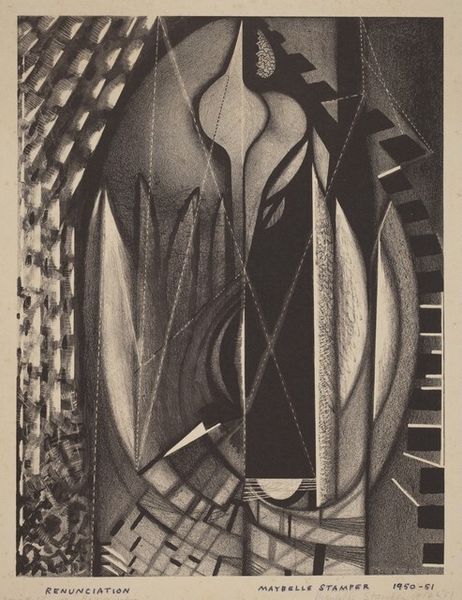
Dimensions: image: 271 x 188 mm paper: 426 x 319 mm
Copyright: National Gallery of Art: CC0 1.0
Curator: At first glance, there is a stark and somewhat somber feeling evoked by this image, predominantly from the monochromatic palette and the deeply contrasting blocks of light and dark. Editor: Indeed. What we have here is a print from 1934 by James Blanding Sloan entitled "We Shall Overcome Some Day." Its style draws from social realism. We might read it as graphic art rendered with, what appears to be, linework. Curator: Absolutely. Considering its creation during the Depression era, it strikes me as profoundly evocative, like a visual echo of spirituals or protest songs of the time. Note the starkly silhouetted figures; they are diminutive in scale as they march between those imposing architectural blocks, leading our eyes to an upward, almost heavenly, light. Editor: The figures are repetitive; there’s something undeniably potent in that seriality. Let's consider the printmaking process itself. I would argue that it directly links the artist’s labor to themes of social progress and endurance. Think about it; printmaking allows for multiples, dissemination, almost like a manifesto. It aligns with ideologies concerning democratic access. Curator: Yes, and it seems the visual language used to realize this work relies quite heavily on negative space. See how the bright passage becomes the compositional focal point. Its ascending visual rhythm guides us and invites interpretation; the lines are, in essence, deeply symbolic. Editor: Agreed, and notice also, how this work may signal connections between Sloan and artistic movements like the Black Arts Movement. His interest was less on art as decoration, or art for art's sake. He cared about cultural empowerment. Curator: Considering the socio-political landscape of its creation, Sloan's composition here really captures this interplay between aspiration and structural adversity in just one graphic image. Editor: Exactly, "We Shall Overcome Some Day," the very title of this 1934 print speaks volumes about resilience in the face of structural oppression through both its means and its imagery. Curator: I’m struck anew by the visual interplay Sloan achieves through light and shadow as if capturing both the somberness of struggle and a glimmer of a brighter tomorrow simultaneously. Editor: Yes. We could spend quite a lot more time tracing the thematic resonances across material, process, and era in this small, potent print.
Comments
No comments
Be the first to comment and join the conversation on the ultimate creative platform.
